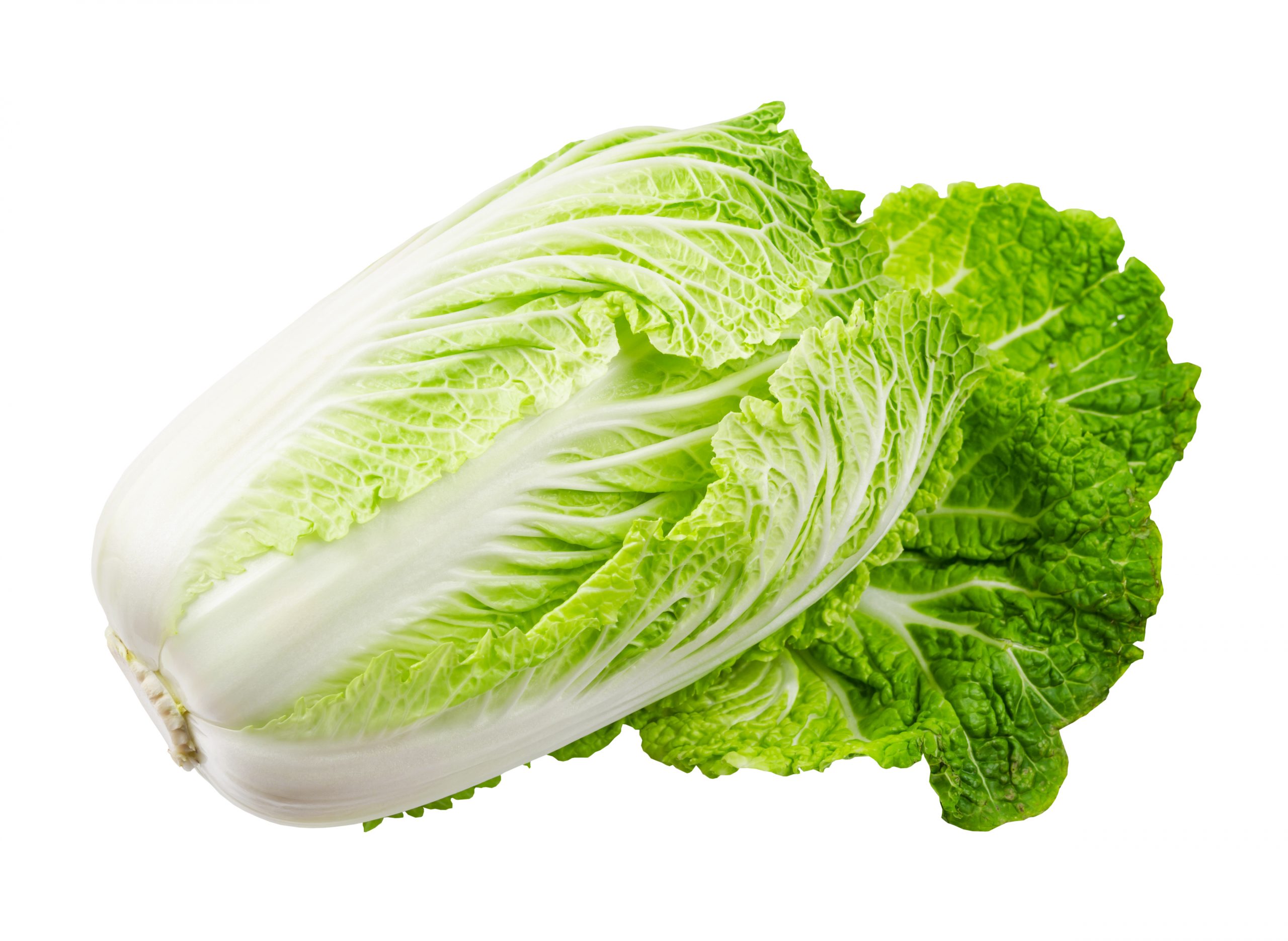Seasons/Availability
Napa cabbage is available year-round.
Current Facts
Napa cabbage, botanically classified as Brassica rapa var. pekinensis, is a member of the Brassicaceae family. It is also known as Chinese cabbage and celery cabbage and grows in cool climates with a long growing season. Napa cabbage has been cultivated since the sixth century in China, making it one of the oldest vegetables grown in the country.
Storage
Napa cabbage can be stored unwashed and wrapped tightly in plastic wrap or placed in a perforated bag for up to two weeks when kept at temperatures of 32-40°F. Once cut, it should remain refrigerated and used within five days.
Nutritional Value
Napa cabbage is an excellent source of vitamin C, an antioxidant that helps strengthens the immune system and aids in collagen production. It is also a good source of dietary fiber, folate, manganese, calcium and magnesium. Additionally it contains iron, potassium, phosphorus and zinc as well as vitamins K and A.
Applications
Napa cabbage can be enjoyed raw or cooked in both savory and sweet applications. Their tender leaves can be used in salads, sandwiches, wraps or slaws. Napa cabbage can also be added to stir-fry dishes, braised with meats or fish, stuffed with ground meat and herbs or roasted with garlic and butter. Its mild flavor pairs nicely with apple cider vinegar, bacon, shallots, sesame oil, garlic, honey and soy sauce. Napa cabbage can also be pickled or incorporated in soups, egg rolls and dumplings.
Napa cabbage will develop a slightly bitter flavor as it matures and the leaves will become thicker with a stronger aroma. Cooked Napa cabbage should be cooked quickly over high heat to avoid a softer texture. Once cooked, it can be served hot or at room temperature. Napa cabbage pairs nicely with apples, bacon, chilies, cilantro, garlic and ginger.





